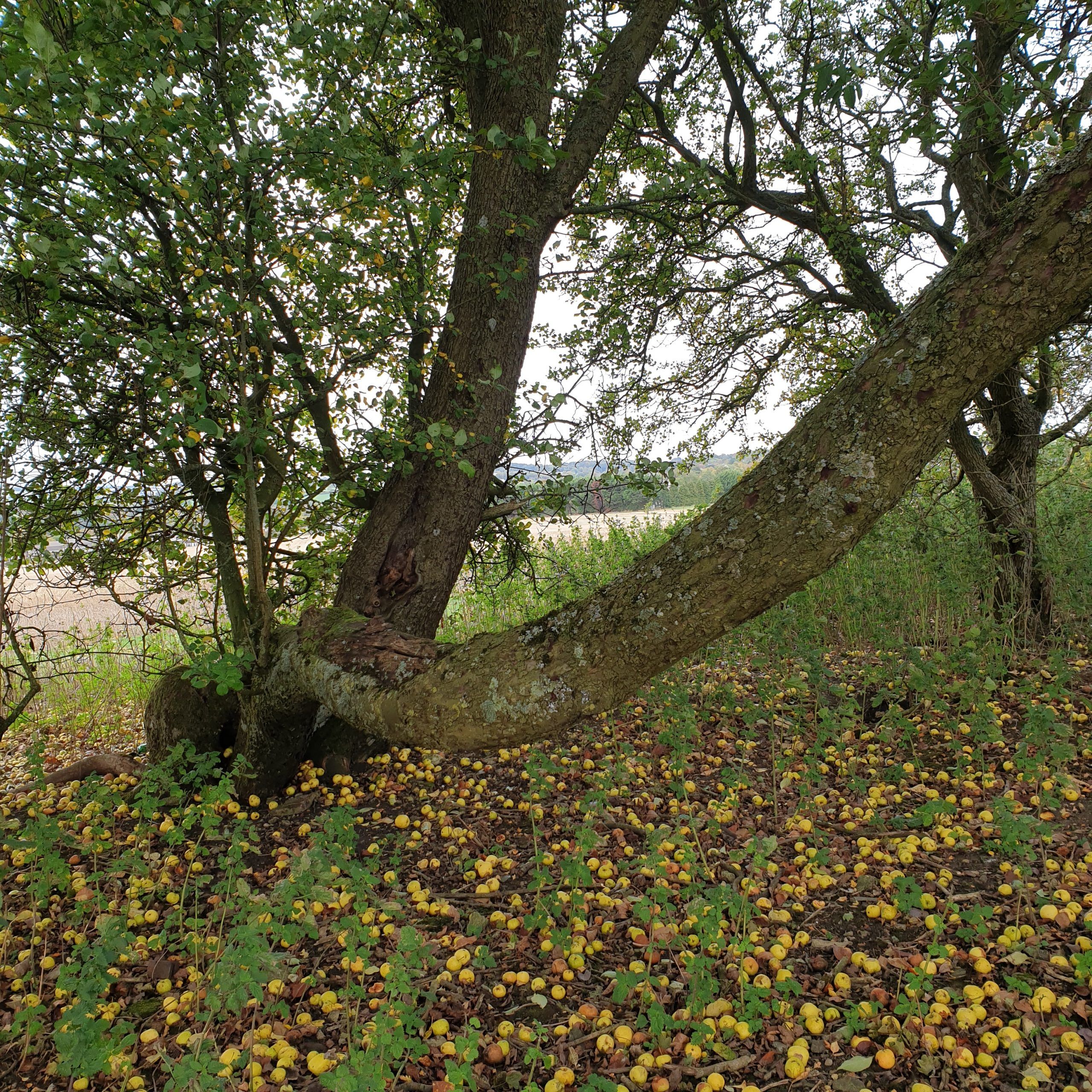
A Cotswolds vantage
Old Walterbush Farm lies at the highest point of my walk. It’s hardly a summit, just a gentle elevation across two fields from home, but at 750 feet above sea level it’s where the rolling waves of the Cotswold landscape finally crest before flowing out eastwards.
The farm is barely there. Brambles have long since knitted a protective muffler over the rubble of the remaining limestone walls. Today its rabbit inhabitants trim the surrounding grass into a smooth putting-green carpet, as though keeping it neat for visitors, who include lads from the town sneaking cans and joints, and dog walkers looping round this small overgrown island before heading back down to the fence-gap by the old football club. In the middle of the ruins, an ancient crab apple tree leans on one elbow, casually showering its yellow fruit on the ground. A venerable hawthorn trunk gnarls up amid cherry trees and field maples.
An ancient crab apple leans on one elbow, casually showering its yellow fruit.
The original structure was most likely not a farm at all, but a sheep shelter, one of the ‘cots’ that gave the area its name. A watchful shepherd could gather his sheep here on wild nights – and by day contemplate the same topography I see now.
Today the land is empty of sheep, but their 500-year wealth-creating legacy endures in landmarks such as the tall Victorian chimney of Bliss Woollen Mill below. To the west, the steeple of St Edward’s church in Stow-on-the-Wold, built by men made powerful by wool, breaks the horizon. The old highwayman’s road canters the long ridge towards the Woolpack town of Burford, and below it the land falls in a blue coverlet woven through with woods and fields. On clear winter evenings, the sun drops behind the rim like a coin into a slot. Turning to the south, the beeches of Sarsden Wood briefly foreshorten the perspective, before it is shafted by a glimpse of the Chiltern hills, thirty miles away. Below them lies the Oxford plain, until recently punctuated by the fat cream towers of Didcot power station. Looking east, the farmer who owns the lime-treed drive and grain silos says the next highest point beyond is the Urals, 3,000 miles off. It’s one way of accounting for the bitter easterlies. The year the Beast blew in, icy spume spiralled off the 10-foot-high snowdrifts on the leeward side of the hedges.
On the far northern reach, seven bony larches ride the skyline above the ancient Rollright Stones and in the foreground, successive tides of housing bring the town nearer every decade.
The endless modern cycle of plough, crops and stubble washes up a pebbled shore of limestones around the old cot. From late January, the bright winter wheat pushes through and larks pitch ceaselessly skywards above it, while the blackthorn hedges sporadically chatter alive with winter finches. Later, yellowhammers spurt their tiny flames on the ash trees that dot the field margins and raise their ragged branches in surrender to the encroaching die-back. Today, an autumn breeze blows through them and lifts the reddening bramble leaves above the sleeping stones of Old Walterbush.
I call the dog and walk home.
© Laura Parker
Genny Sandalls
Beautifully descriptive piece which I really enjoyed reading. Living on the edge of Bucks not too far from the Cotswolds and close to the Chilterns the words on landscape and farming were resonant to me.